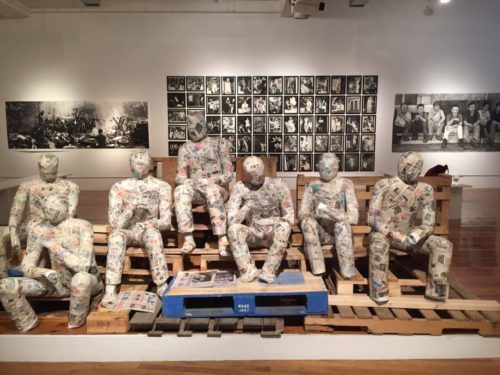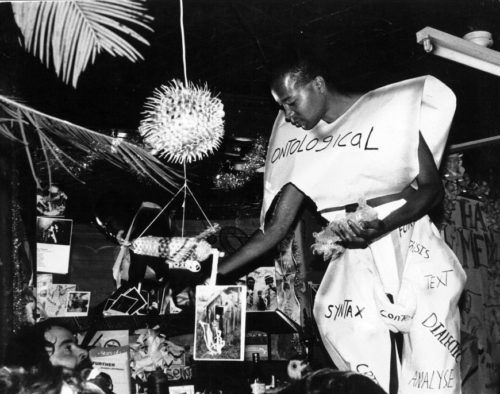On November 23rd, 2017 artist and photographer Toyo Tsuchiya prematurely passed away in his Lower East Side apartment. He was 69.
A sensitive and curious observer of life, Tsuchiya definitely shaped New York’s art world as a devout and poetic chronicler of an underground art scene of which he was a vital part. Tsuchiya was one among several co-founders of the enigmatic Rivington School – a collective of artists formed in the early 80s whose most famous works were the “Sculpture Gardens” – immense and fantastic constructions of welded scrap metal and other found materials that filled a succession of empty lots on the Lower East Side, all long since bulldozed down. The School, an off-spring of the better known No Se No Social Club, was also a gallery and performance space. Tsuchiya caught on camera the venue’s many shows and happenings – including the hunting beauty of the various Sculpture Gardens – with charged, in-the-thick-of-things immediacy. He meanwhile also chronicled the fringe activity taking place in the working class, largely Hispanic neighborhood that served as backdrop, capturing the unique synergy between such contrasting worlds.
A friendly but reserved man, Tsuchiya wrote about himself in 1992: “I left Japan with a three-month VISA in May 1980. I have since spent twelve winters in New York City. I lived in 17 places around Lower Manhattan, I have never been mugged, but my apartment was robbed three times and I lost seven cameras. Everything then was new to me, I was like a child. From this time I began exhibiting my work and had four one-man shows between ’83 and ’85. Those years were very important in the development of the East Village art scene. In 1985, I moved into the No Se No Social Club, and I started directing gallery shows for the Rivington School and documenting their activity: With Ray Kelly and other artists friends, the No Se No/Rivington School Sculpture Garden project began in the empty lot next door, and a junk monument of welded urban garbage rose up. I found my place in a situation where I could use my photographs and bring out something new. I believe No Se No Social Club/Rivington School movement were the bottom line of the New York art world in the 1980’s.”
In 2016 Tsuchiya published an impressive and engaging book titled Rivington School: 80s New York Underground crammed with vibrant photos and posters, newspaper cuttings and hand drawn flyers duly archived by Tsuchiya himself. “My camera was like another eye or another arm, I carried it all the time, like an identification, and documented what I saw. [From 1982 to ’85,] I spent my nights taking pictures of performances, and my connection with performance photography crystallized. I shot my photographs from within the subject, not as an outsider,” wrote the artist. In more recent years he returned to visual arts with powerful drawings of larger-than-life people, masterly executed in vibrant graphite lines that reveal his profound sensitivity to the human condition.
With his customary precision, Tsuchiya taught himself to sculpt last year, creating a singular work that, in the light of his untimely demise, can almost be interpreted as his magnum opus: a compelling installation of seven life-size figures of immigrant workers having their lunch on a sidewalk, a reproduction of the subjects of a photograph he took in Chinatown thirty years ago.
Toyo Tsuchiya: Invisible Underground, a tribute to New York and the Lower East Side, was his last exhibition – accompanying a book of the same name – held last December at Howl! Happening in the East Village.


